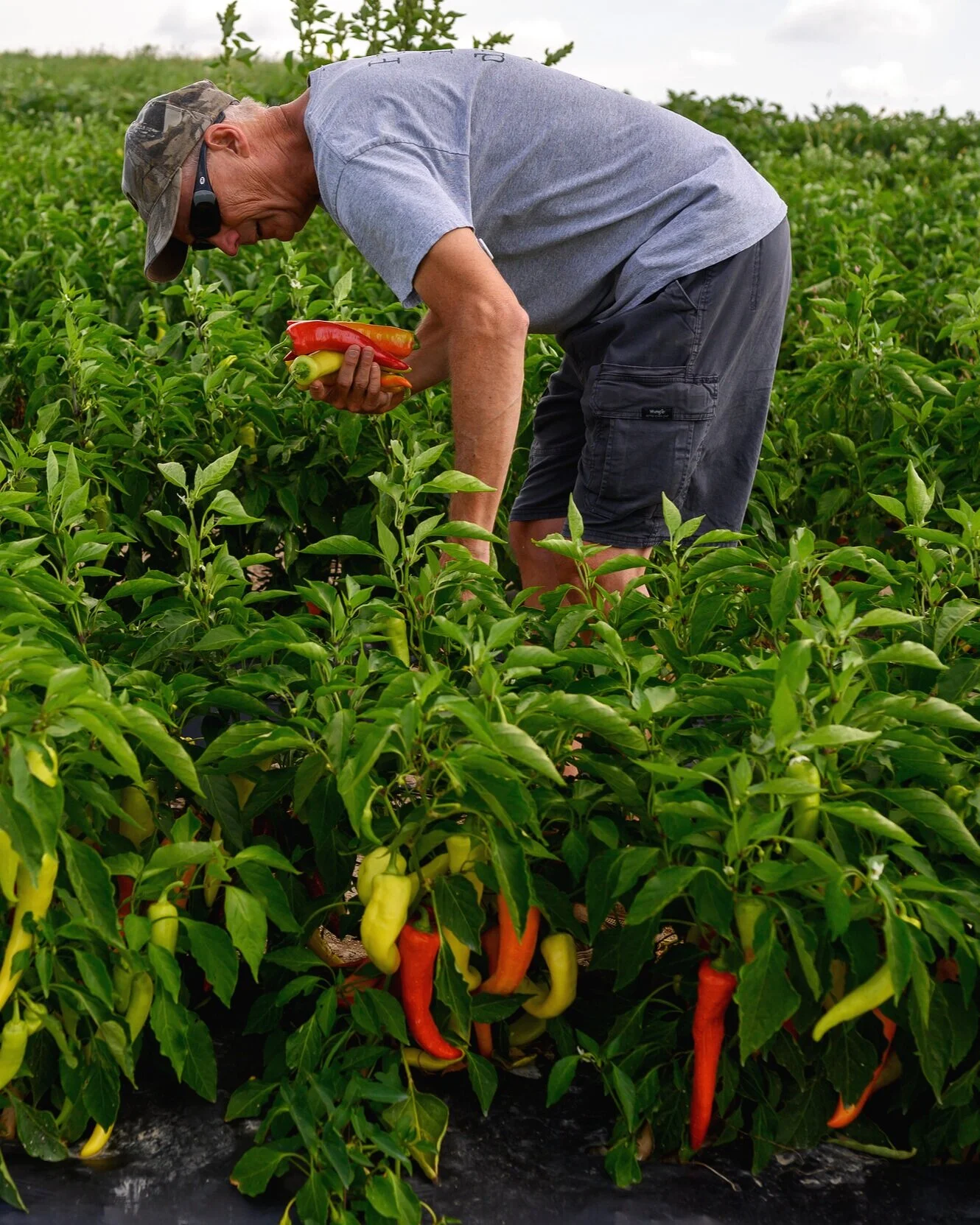Pep Talk
Photography by Jeff Swensen
It’s a random springtime Tuesday, just shy of the usual noon rush, and parking spaces at Trax Farms in Finleyville are already at a premium. There are mothers pushing strollers and holding sticky hands, a suit on his iPhone, and a senior couple walking hand-in-hand. Off on the horizon, a nimble tractor meanders across a rolling hill, doing as it always does—planting, cultivating, harvesting one of the farm’s 325 acres so the rest of us can grab a cart and fill it up with homegrown fruits and vegetables. Today that tractor is prepping the fields for 2020’s crop of green beans, blueberries, cantaloupe, sweet corn, red raspberries, zucchini, eggplants, peppers, and more.
Led by Bobby and Patty Trax, this is the seventh generation of family farming here. It all began in 1814 when Jacob Trax and his family set sail from Strasburg, France, with America on their minds. By 1865, he and his son, Louis, had made their way to the sleepy little village of Library, PA where Louis paid $5,000 for a log home and 75 acres, and in the midst of raising a family of 15, picked up a plow, and got to work. Nearly 100 years later, the family continues their stewardship of the land. Winter. Spring. Summer. Fall. Their farm to your table, for more than 150 years.
Across the road from the store is a hillside field devoted to peppers. Though it is just an expanse of rich, fertile earth at the moment it will soon enough be covered in plants fruited with greens and yellows and reds and oranges. Hungarian. Gypsy. Green Bell. Red Bell. The waxy, yellowish Hungarian, a doppelganger for the banana pepper, renders a spicy bite that registers at least as hot, if not up to four times hotter, than the fabled jalapeño. Were it not harvested before fully mature, the Hungarian would turn red in color and skyrocket on the heat index. Roast them on the grill or toss them in a salad. They’re also a staple in Latin dishes and mole sauce. Either way, expect a feisty punch.
If you’re not into such bold interactions, you’ll be smitten by the intriguing sweetness of the Gypsy Pepper. Revered as “a true charmer,” this fleshy little number radiates Bell-Pepper vibes with a slightly more complex flavor that starts smoky sweet and finishes floral in muted tones of oranges, reds, and yellowish greens. Green thumbs take note: they’re also considered an essential addition to an edible landscape.
But few good-weather dishes seem complete without old faithful: the Bell Pepper. It’s that delightful crunch, that pop of vibrant color; although, even that is determined by ripeness rather than variety. Least ripe? Green. Most ripe? Red. Once harvested, they retain the color they were when picked. It’s always the chef’s prerogative as to how to put peppers or any vegetable to good use, whether raw, sautéed, cooked, steamed, or smoked on the grill. But any way you slice ‘em, they’re always best when they’re fresh from the farm.
Visit traxfarms.com for location, hours, and more information.
STORY BY KATE BENZ // PHOTOGRAPHY BY JEFF SWENSEN
Don’t miss a single farm fresh thing!

